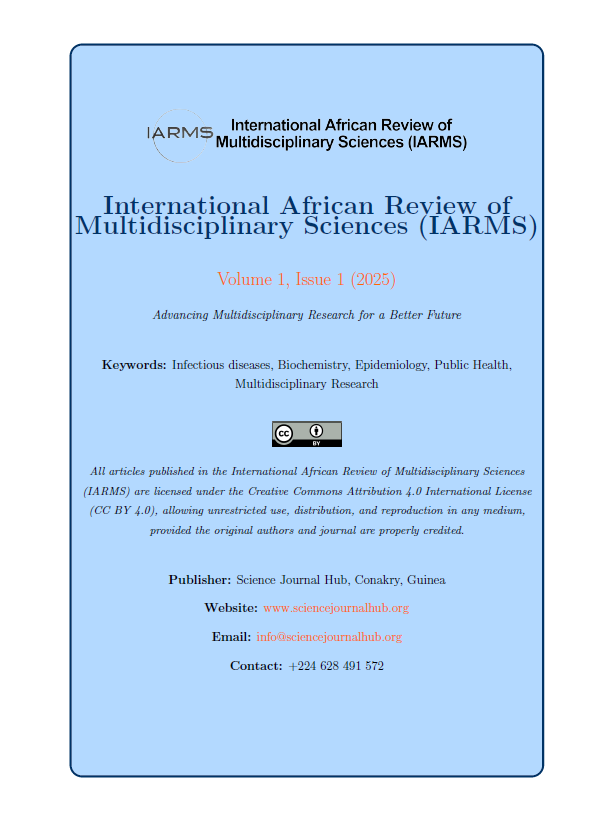Epidemiology and impact of hepatitis B virus on haemato-biochemical parameters in patients in Conakry (Republic of Guinea).
Keywords:
Hepatitis B, Haematology, Biochemistry, Epidemiology, ConakryAbstract
Introduction: Infection with the hepatitis B virus is a major public health problem worldwide. There are an estimated 350 million chronic HBsAg carriers worldwide. Objective: To determine the prevalence of HBV and hepatic and blood disorders by testing for HBsAg and measuring transaminases in patients at health facilities in Conakry. Method : This is a prospective, descriptive, cross-sectional study covering a six-month period from 1 July to 1 December 2022. Results : Serodiagnosis of the hepatitis B virus in 746 patients in Conakry revealed 101 positive cases, i.e. a prevalence of 14%, compared with 645 negative cases, i.e. 86%. 78% of patients had haemoglobin levels <12 g/dl, with the following anaemic typology: 61% had a haemoglobin level between 10 and 11 g/dl (a sign of frustrated anaemia), 34% had a haemoglobin level between 8 and 9 g/dl (a sign of moderate anaemia) and 5% had a haemoglobin level ≤ 7 g/dl (a sign of severe anaemia); 42% of patients had low lymphocytes, 26% low monocytes, 19% low neutrophils and 14% low leukocytes. While 30% of patients had hyperleukocytosis and 31% hyperlymphocytosis. The transaminase assay showed that 75% of patients had increased ALT levels and 66% had increased ASAT levels.. Married people were the most represented with a prevalence of 68% against 32% of single people. The female sex was the most affected with 80% against 20% for the male sex. Almost all socio-professional categories were affected by hepatitis B with a predominance of Housewives with 26/101, i.e. 26%, followed by Workers with 19/101, i.e. 19%, Commercial and Administrative workers with 18%, Pupils/Students with 17%. The age group between 31-40 years with 36% followed by 21-30 years with 35% were the most represented in this study. The commune of Ratoma is the most represented with 60%, followed by Dixinn with 17% and the commune of Matoto with 12%. Conclusion : Hepatitis B is a major public health problem and in order to improve the management of patients, the determination of haematological parameters is necessary.
Downloads
-
PDF
7151










